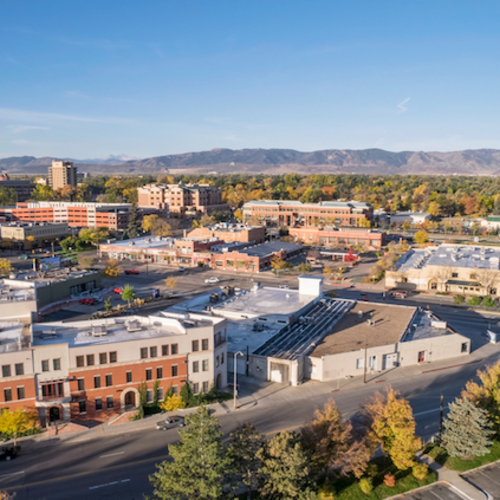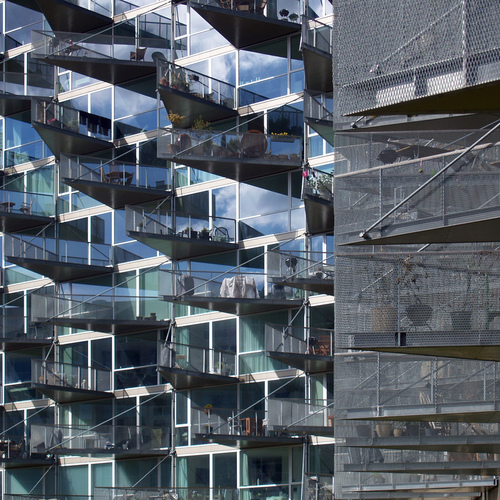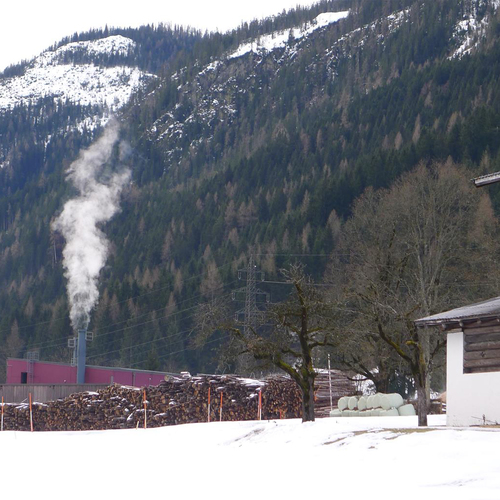Image Credit: Wikimedia Commons
During my recent travels in Europe, I was surprised at the wide variety of approaches to heating methods and distribution. For example, in the U.K. we visited the Southampton City district heating scheme, a project that uses geothermal and CHP (combined heat and power). The centrally generated heat is supplied to surrounding buildings through underground pipes. It serves 45 businesses, and the businesses save 10% on energy costs plus all of the costs of owning and maintaining heating equipment.
Intrigued, I did some research. Apparently, France is home to the world’s oldest known geothermal district heating system. The system in Chaudes-Aigues has been in use since the 14th century, though the Romans already employed under-floor heating systems in Pompeii.
In more recent history, in 1881, Birdsill Holly, an engineer from Lockport, New York, patented a system of “district heating” that used centralized boilers and a network of main and branch pipelines to deliver steam heat directly to homes. Installations were tested in such cities as Denver, Colorado; Detroit, Michigan; and Springfield, Massachusetts.
Exploding sewers
New York was the biggest of the test markets. Apparently, the system performed flawlessly during the Blizzard of 1888, but subsequent cracks in some of the pipes led to escaping steam, water leaks that seeped into residential basements, and increased heat in the city’s sewer lines, resulting in some very smelly explosions. The situation was deemed to have created “conditions dangerous and detrimental to life and health,” and the city shut down the system.
Though the system was subsequently restored, the old pipes continue to cause problems. As a result of this first experience with steam heating, district heating in the U.S. is now usually found in settings such as universities, public buildings, and hospital complexes, and only rarely as centralized residential heating, as Holly had intended.
Energy savings and reduced CO2 emissions
Much has changed since the early days of implementation. Certainly, pipe materials are more durable and less prone to cracking and corrosion. And the advantages are numerous. Operating and maintenance, which can be sporadic in individual buildings, can be centralized for greater attention.
There are also economic gains from reduced redundancy. The increased efficiency of one unit operating at peak efficiency means less waste and less CO2 and other pollutants. Even capital costs are less, since the savings of a centralized plant offsets the extra cost of the distribution lines.
District heating in Europe
Birdsill Holly must be smiling from his grave, because district heating is very much alive and well in Europe, and increasingly included in new residential complexes. For example, in Denmark district heating provide 60% of the country’s heating needs.
What is even more exciting is the marriage of alternative fuels sources with district heating. In many ways, this is a perfect solution for geothermal. We often hit a “problem” with ICF houses or apartment complexes — the space heating demand is so low that the capital expenditure for geothermal systems has a questionable cost/benefit ratio. If the same installation could service several buildings, then the system would pencil out.
Heating with biomass
The other development in Europe is the use of biomass fuels, such as wood chips or pellets. High efficiency biomass boilers can reduce the CO2 output compared to the use of fossil fuels, and they are also more readily adaptable to alternative biomass sources (other than wood chips and pellets) as these become available.
While these systems use the same basic technology as backyard wood chip burners, the commercial models have an automatic feed mechanism supplying the burner, which can be moderated based on demand. The refilling of the fuel storage bin is also automated, with a signal sent to the supplier when the material reaches a certain point. Another benefit of this type of equipment is the ability to scale it from just a couple of houses to a large development; we saw both types of systems in Southampton.
This distributed concept could be applied to other technologies as well. I’m thinking of my favorite heat-to-energy concept, Cool Energy. This system uses solar thermal collectors to provide heat to a tank, and converts this heat to electricity on demand by means of Stirling Engine technology.
The company that promotes the technology has long stated its intent to adapt this for residential use. However, there are high capital costs, implementation costs, and innovation costs, and the technology is better adapted to a larger setting. But this could be implemented in a new development – with the panels on top of a local school or grocery store, and thermal heat and electricity distributed throughout the neighborhood. This would be far more “green” than subsidizing panels for every house.
Dr. Vera Novak was recently awarded a PhD in Environmental Design and Planning by Virginia Tech. Her work is dedicated to increased depth and breadth of sustainability in construction, by leveraging the points of greatest potential impact. She is currently working on optimizing corporate sustainability practices to support regenerative design, as well as adapting a lean thinking process for smaller scale projects. She also writes the Eco Build Trends blog.
Weekly Newsletter
Get building science and energy efficiency advice, plus special offers, in your inbox.















2 Comments
Drake Landing
Here's a Canadian housing development using district heating with solar energy: http://www.dlsc.ca/
Group survival equals group mortality
With the good comes the bad and the ugly. No way around that.
Log in or create an account to post a comment.
Sign up Log in